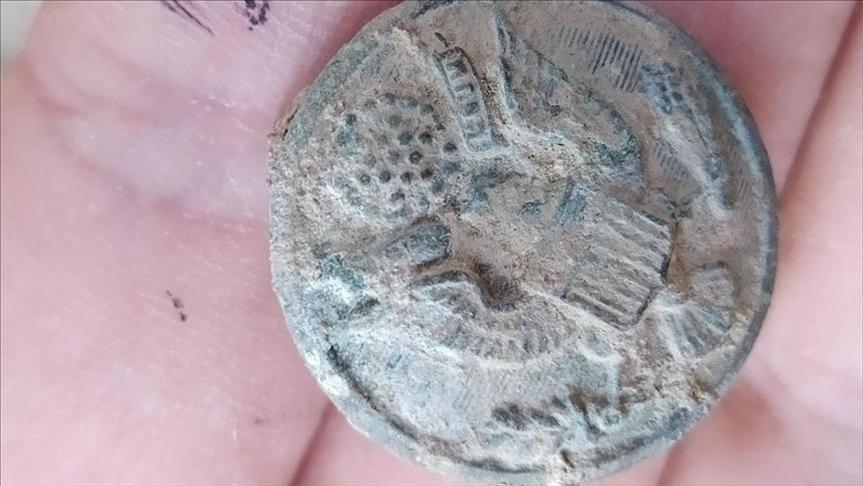
A badge found in Turkey's southeastern province of Diyarbakır during the excavations at the 3,000-year-old Zerzevan Fortress that was used as a "military settlement" during the Roman Empire, aroused curiosity.
Excavation work, launched in 2014 by the Culture and Tourism Ministry, Dicle University, Turkish History Association, and some other regional institutions, is still in progress.
A Roman Mithras underground temple, tower defense, church, office building, residential houses, grain and arms depots, bunkers, rock tombs, and water channels, as well as many vital artifacts were revealed in the Zerzevan Castle.
It is also on the temporary list of UNESCO World Heritage Sites.
Aytaç Coşkun, a faculty member at Dicle University and the head of the excavation team, told Anadolu Agency that they have found a badge during the excavation work.
The motif on the surface of the badge, removed from a depth of 125 centimeters on the eastern walls of the Zerzevan Fortress during the ongoing excavations, was first designed in 1782, Coşkun said.
"Early examples of this type of badge or buttons were used in the U.S. in the 1850s. Since 1902, this badge-like coat of arms has also been used by the U.S. army. Similar examples were also used in World War I and belong to the general service unit," he stressed.
He added that the Latin inscription "E Pluribus Unum" was placed on the badge.
"This is the first official slogan of the U.S. This slogan, which is Latin (the official language of the Roman Empire), means 'from multiplicity to unity.' This slogan was used to mean the union of the 13 colonies that make up the U.S.
On the right paw of the eagle is an olive branch, on the left is a tightly drawn bundle consisting of 13 octaves. It is known that these symbols represent the 'power of peace and war',” he noted.
“A scroll inscribed 'E Pluribus Unum,' the motto of the first committee, is seen on the eagle's beak. The shield, located on the chest of the eagle and representing the states, indicates the unity of the federal government. A bright constellation of 13 stars was used above the eagle's head."
"The unveiling of this badge of copper-zinc alloy at the Zerzevan Fortress is quite interesting and attractive," said Coşkun, adding that there have been no such findings in an archaeological excavation in Turkey or abroad according to their research.
"Similar examples are found only in the U.S. and the U.K. Detailed analyses … were performed on the badge. It turned out that post-15th-century technology was used.
“Also, the analysis showed that the badge remained under the ground for about 250-300 years, since the 18th century,” he noted.
“Early examples of this type of badge or buttons were used in the U.S. in the 1850s. Since 1902, this badge-like coat of arms has also been used by the U.S. army,” he said, mentioning how surprising it is to find such an item that probably belongs to the period of the U.S.’ foundation.